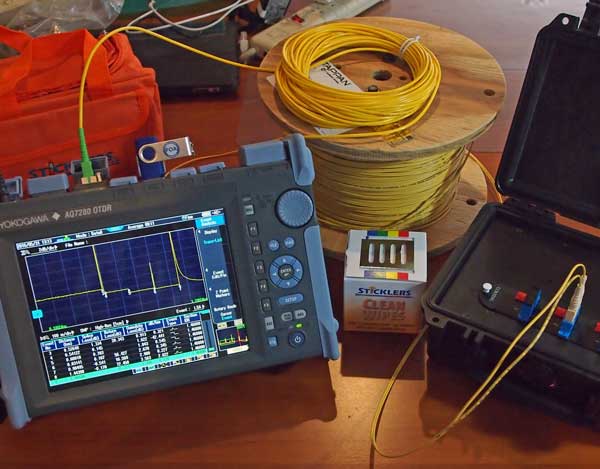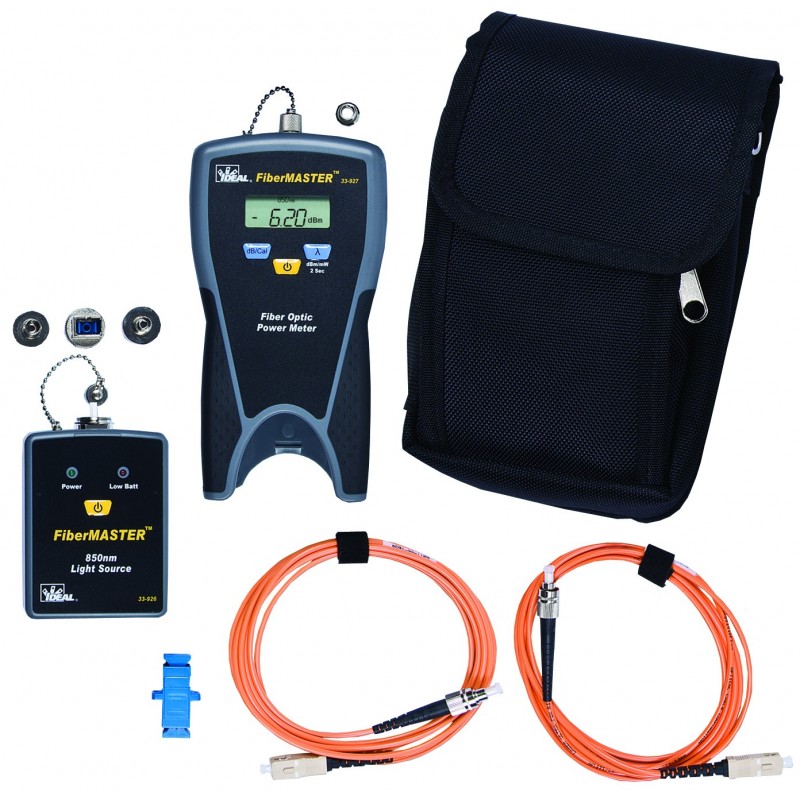Innovative Robotic Vision Systems for Improved Automation and Precision Tasks
Wiki Article
Essential Attributes to Seek in Optical Fiber Screening Equipment
When examining optical fiber testing tools, a number of essential attributes call for cautious factor to consider to make sure optimal efficiency and dependability. Compatibility with existing industry requirements improves functionality, while sophisticated dimension capabilities, consisting of TDR and OTDR screening, offer essential insights into network honesty. Recognizing these features will drop light on just how to select the appropriate devices for your details requirements.Precision and Precision
Precision and accuracy are crucial specifications in the evaluation of optical fibre screening tools. These two qualities make certain that measurements show the real efficiency of fibre optic systems, which is important for reliable network installment, maintenance, and troubleshooting. Accuracy refers to the nearness of a gauged worth to the real value, while precision denotes the repeatability of measurements under the same problems.When picking optical fiber screening equipment, it is crucial to consider instruments that offer high precision and accuracy to decrease mistakes in data interpretation. Tools such as optical time-domain reflectometers (OTDRs) and power meters need to have calibration mechanisms to ensure constant efficiency gradually. Furthermore, the requirements supplied by suppliers need to information the devices's dimension uncertainty, which directly affects the dependability of examination results.
Additionally, the efficiency of optical fibre testing equipment can be influenced by environmental variables, such as temperature and moisture. For that reason, picking tools designed to minimize these variables will enhance dimension fidelity. In verdict, buying optical fibre screening devices with robust precision and accuracy functions is fundamental for keeping ideal network performance and ensuring the honesty of fibre optic communications.

User-Friendly User Interface
The efficiency of optical fiber testing tools is not entirely figured out by its accuracy and precision; an user-friendly interface plays a substantial role in improving functional efficiency. A well-designed interface streamlines the communication in between the service technician and the tools, enabling a much more instinctive understanding of intricate functions.Secret attributes of a straightforward interface include clear navigating food selections, sensible layouts, and easily available controls. These components make it possible for technicians to carry out tests quickly without considerable training, reducing the possibility of individual error - ofda. Additionally, aesthetic indications such as progression bars, alerts, and graphical representations of data can considerably improve the individual experience by offering instant comments on the testing process.
In addition, personalized setups can additionally streamline operations by enabling users to adjust parameters according to specific testing requirements. This adaptability not only conserves time yet additionally makes certain that the tools satisfies diverse application needs.
Incorporating aid functions, such as tooltips and comprehensive guidebooks, into the user interface can further encourage individuals, advertising self-sufficiency and confidence in running the devices. Ultimately, a straightforward interface is crucial for optimizing the capacity of optical fiber testing tools, causing extra effective and reliable testing end results.
Mobility and Sturdiness
Portability and toughness are essential qualities of optical fiber testing devices, ensuring that it can stand up to the roughness of numerous atmospheres while staying very easy to transport. Professionals typically operate in varied settings, from telecommunications hubs to remote installments, making it essential that testing devices are lightweight and small (ofda). Devices made with transportability in mind typically features ergonomic manages and instances that facilitate uncomplicated activity, therefore enhancing functional efficiency on-siteToughness is equally important, as optical fibre testing equipment is frequently exposed to harsh conditions, consisting of temperature level variations, dampness, and physical effects. Tools built with tough materials such as reinforced plastics or steel real estates are robotic vision better suited for these environments, minimizing the threat of damages during use and transportation. In addition, devices with water and dust resistance ratings, such as IP rankings, makes certain trusted efficiency in difficult conditions.
Compatibility With Specifications
Making certain compatibility with sector requirements is vital for optical fiber testing equipment, as it straight impacts the integrity and credibility of test outcomes. Optical fibre networks undergo rigid performance standards established by numerous organizations, including the Telecoms Industry Organization (TIA) and the International Electrotechnical Commission (IEC) Examining devices has to comply with these standards to make sure that measurements are regular and comparable throughout different systems and atmospheres.
When selecting optical fibre screening equipment, customers should validate that the device satisfies relevant requirements pertinent to their certain application, such as those related to attenuation, transmission capacity, and crosstalk. Equipment that is certified with established requirements not just helps in accomplishing exact results yet likewise promotes interoperability among tools from various producers.
Furthermore, compatibility with criteria guarantees that the devices can be used in regulatory compliance circumstances, which is crucial for jobs in fields such as telecommunications, aerospace, and military applications. Investing in optical fibre testing equipment that aligns with present market requirements is an essential element of keeping quality assurance and achieving optimal network performance.
Advanced Measurement Capabilities
Advanced measurement capabilities are a defining feature of modern optical fibre testing equipment, enabling detailed evaluation of network performance. These abilities make sure that technicians can assess vital specifications such as signal loss, dispersion, and data transfer, which are important for preserving optimal communication efficiency.One key facet is the capacity to carry out time-domain reflectometry (TDR) and optical time-domain reflectometry (OTDR) tests. These techniques make it possible for customers to determine faults, measure the length of fibres, and figure out the location of problems with exceptional accuracy - ofda. Furthermore, advanced tools often consists of the ability to measure optical power degrees, assisting to assess the total health and wellness of the network and ensure conformity with the needed specifications.
Additionally, some testing gadgets use innovative algorithms for real-time analysis, allowing quicker medical diagnosis and troubleshooting. In verdict, spending in optical fibre testing devices with innovative dimension capacities is important for making sure network integrity and efficiency in today's requiring telecoms landscape.
Verdict

Report this wiki page